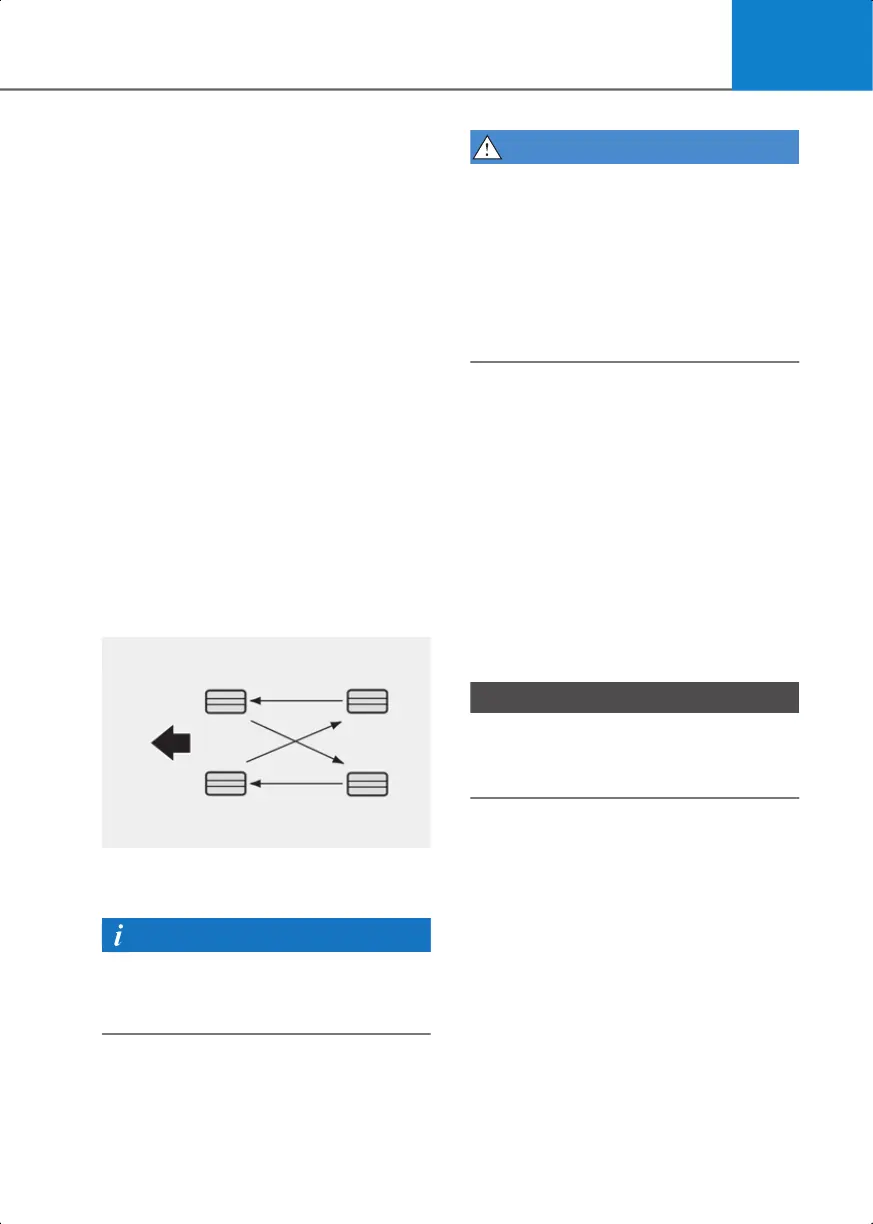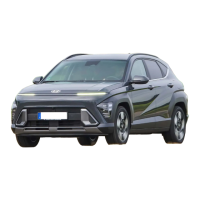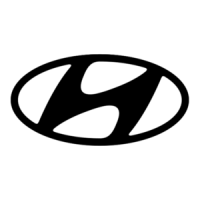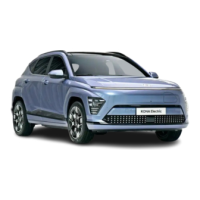9
9-37
Tire rotation
To equalize tread wear, have the tires
rotated according to the
maintenance schedule or sooner if
irregular wear develops.
During rotation, check the tires for
correct balance.
When rotating tires, check for uneven
wear and damage. Abnormal wear is
usually caused by incorrect tire
pressure, improper wheel alignment,
out-of-balance wheels, severe
braking, or severe cornering. Look for
bumps or bulges in the tread or side
of the tire. Replace the tire if you find
any of these conditions. Replace the
tire if fabric or cord is visible. After
rotation, be sure to bring the front
and rear tire pressures to
specification and check nut torque
(proper torque is 79-94 lbf·ft [11-13
kgf·m]).
2C_TireRotation
Disc brake pads should be inspected
for wear whenever tires are rotated.
When installing an unsymmetrical
tire, install the side marked “outside”
facing out.
• Do not use the compact spare tire
for tire rotation.
• Do not mix bias ply and radial ply
tires under any circumstances. This
may cause unusual handling
characteristics that may cause loss
of vehicle control and result in a
collision.
Wheel alignment and tire
balance
The wheels on your vehicle were
aligned and balanced carefully at the
factory, and you may not need to
have your wheels aligned again. If
you notice unusual tire wear or your
vehicle pulling to one side, the
alignment may need to be adjusted.
If you notice your vehicle vibrating
when driving on a smooth road, your
wheels may need to be rebalanced.
Only use approved wheel weights or
your vehicle’s aluminum wheels may
be damaged.
Hyundai_SX2_en_US.book Page 37

